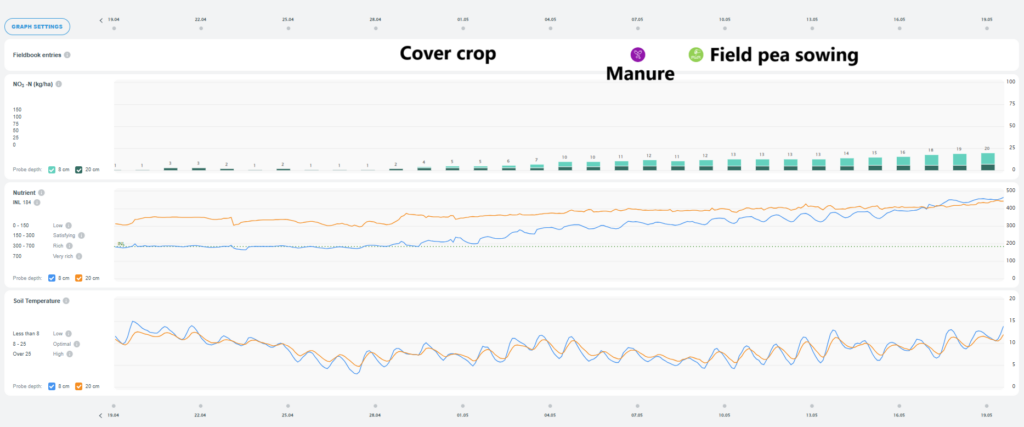
Cereal grower Tõnis Soopalu from Estonia, known on social media as Farmer Tõnis, has set himself the goal of improving soil health and fertility on his field in Oonurme. As one important step, he sowed a cover crop last autumn to increase the organic matter content of the soil. To assess its impact, he also installed a Paul-Tech soil station on the field, which enables real-time monitoring of nutrient movement and changes in the soil.
Spring results: nutrient levels increased steadily
In spring, as the soil warmed up, the station data clearly showed a gradual rise in nutrient levels. By the time manure was applied, 12 kg/ha of NO₃-N had formed in the soil over 28 effective crop growth days as a result of biological processes, despite the cold weather.
Considering the price of nitrogen per kilogram, this amount equalled a third of the cost of the cover crop seed. Meanwhile, the decomposition of plant residues continues, and nitrogen leaching in autumn was avoided.
Peas sown by Farmer Tõnis on 9 May also significantly improve the soil. According to the Paul-Tech soil station data so far, the nitrogen produced by the pea’s root nodules is sufficient to support the development of autumn crops.
As of the end of the second ten-day period of May, the data shows that due to the combined effect of the cover crop and manure, the NO₃-N content in the soil has increased to around 20 kg/ha.